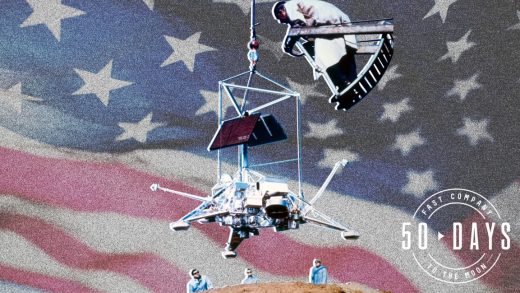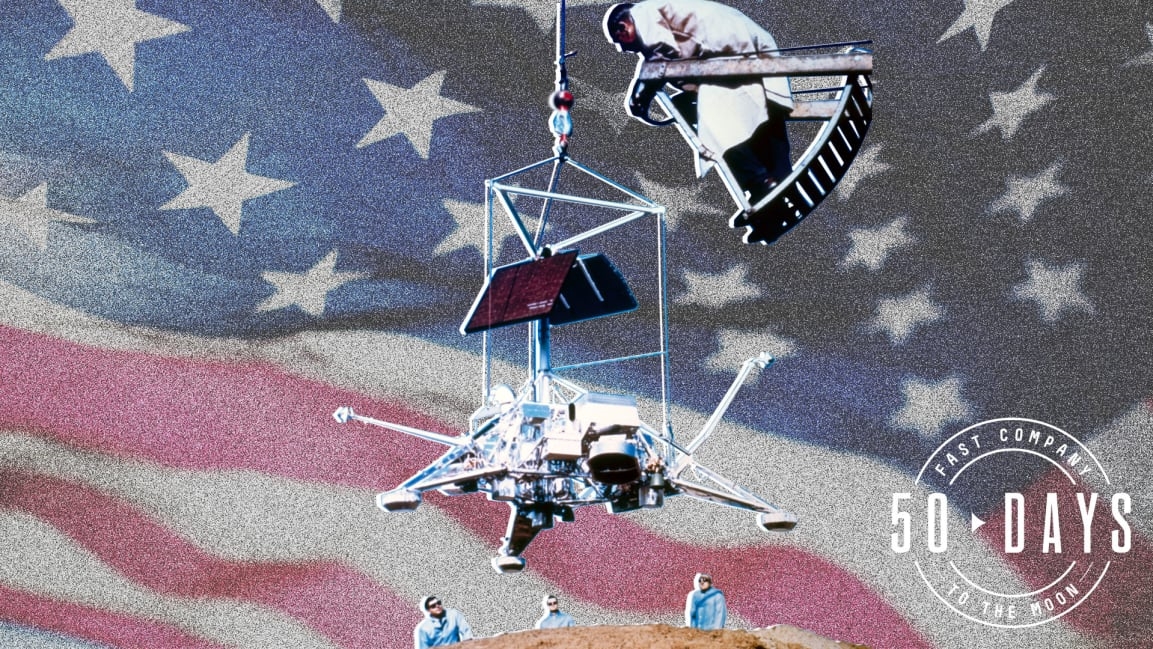The charming conspiracy that put the first American flag on the Moon
This is the 34th in an exclusive series of 50 articles, one published each day until July 20, exploring the 50th anniversary of the first-ever Moon landing. You can check out 50 Days to the Moon here every day.
On June 2, 1966, a spaceship called Surveyor 1 settled into a crater in an area of the Moon called the Ocean of Storms. Surveyor 1 was the first U.S. probe to make a soft, powered landing on the Moon, swooping to within 40 miles of the Moon’s surface at 5,800 mph, before firing its retrorocket, then using landing thrusters to slow further, until the 640-pound craft coasted the last few feet to drop safely onto the lunar surface.
Surveyor 1 was a triumph. The spacecraft sent back TV images and 11,237 photographs of the Moon’s surface. It also carried a secret cargo that its own scientists had slipped onboard.
Surveyor—a series of seven identical robotic spacecraft headed to different places on the Moon—was a mission run by NASA’s Jet Propulsion Lab (JPL) in Pasadena, California. The distinctive, three-legged lunar landers were built by Hughes Aircraft. That June day that Surveyor 1 landed on the Moon and started sending back pictures, Sheldon Shallon, Hughes’ chief scientist, held a press conference and revealed that the ship carried a small, unscheduled item that neither NASA nor Shallon’s bosses knew about: an American flag.
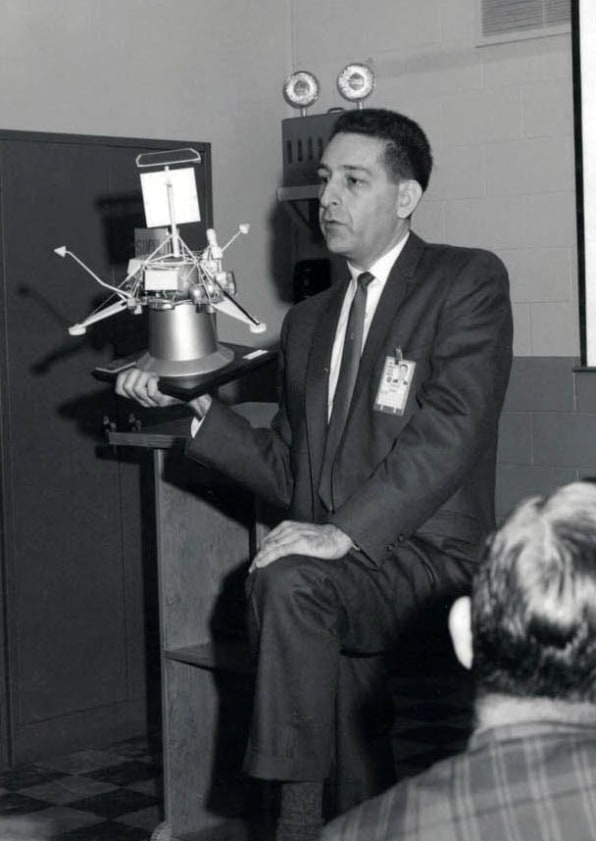
[Photo: Courtesy the Shallon Family]
The story of how Shallon and his colleagues got the first American flag on the Moon is like something out of a John LeCarre novel.
On a Saturday afternoon 10 days before Surveyor 1’s launch, Shallon went to a Sav-On discount drugstore on Sepulveda Avenue in Los Angeles and bought an American flag on a wooden stick, the kind you would get for an eight-year-old to wave at a July 4th parade. The flag cost 23 cents.
In a memo written months later, during an internal investigation into “the flag incident,” Shallon detailed with the austere precision of a Cold War spy mission after-action report the subterfuge necessary to get the five-and-dime flag onto the Moon:
The staples that held the flag on a wood staff were removed with a pocket knife.
In the afternoon of 21 May 1966, the flag was placed between the pages of a report that was to be carried [to the spacecraft preparation area the next day].
In the evening of Sunday, 22 May 1966, the flag was removed from between the pages of the report and given to [Surveyor] personnel.
A second attached memo details the care with which the wispy flag was then prepared for flight. A Hughes staff member named D. C. Smith took responsibility for cleaning the flag, a two-hour process he described in a one-paragraph memo acknowledging his participation:
The flag was delivered to me at approximately 20:00 hours [8 p.m.] on Tuesday 24 May 1966. I removed all loose fibers and threads from the seamed edge, then washed the flag in clean solvent [Freon TF], followed by thorough rinsing in a flowing stream of solvent filtered through a membrane filter rated at 0.45 microns. The flag was dried by blowing with clean gaseous nitrogen, then immediately sealed into a nylon bag. I delivered the flag to the vehicle test crew…at approximately 22:00 hours [10 p.m.] on Tuesday, 24 May 1966.
The Hughes flag plotters were nothing if not meticulous in their effort not to let the flag unintentionally hurt the mission.
The next day, Wednesday, May 25, 1966, Shallon’s account continued, “the flag was removed from the plastic bag and inserted with the aid of a thin screwdriver through a small hole into the lower spaceframe member below the Surveyor TV Camera.”
The flag—at four by six inches, just a little bigger than an index card—had been rolled up and slipped into one of the hollow tubes of Surveyor 1’s structural frame. Surveyor was launched five days later, the following Monday, and landed on Wednesday, carrying the first American flag to land successfully on the Moon.
The press loved the story. The tiny rolled-up flag made the front page of Washington’s Evening Star, the inside of The New York Times, and the front pages of dozens of newspapers from one side of the country to the other. The Tallahassee (Florida) Democrat: “A 23-Cent U.S. Flag Is on the Moon.” The Denton (Texas) Record Chronicle: “‘Old Glory’ Flying High.”
NASA and JPL were not pleased, but we know this only secondhand, from the Hughes “investigative” memos. The flag is not mentioned in any NASA documents or oral histories and is absent from the official JPL report of the mission, which runs 626 pages across three volumes and says Surveyor 1 “achieved a perfect soft-landing on the Moon.”
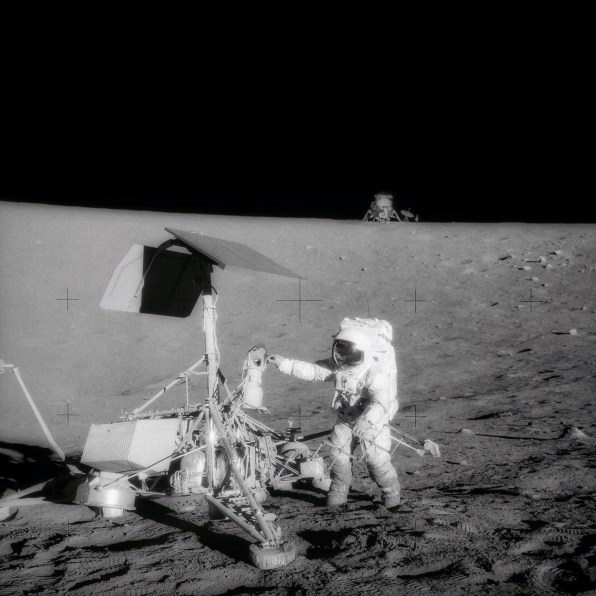
[Photo: NASA]
In a final internal Hughes Aircraft memo on the topic, written just two weeks before the launch of Surveyor 2 and distributed widely to Surveyor spacecraft staff, R. R. Gunter, a manager, wrote, “Considerable criticism and discussion has risen from the Surveyor 1 American Flag incident. NASA and JPL have taken a very strong position with regard to such actions. As a result, you are explicitly directed to see to it that no similar actions are taken on Surveyor 2, 3, 4, or other spacecraft. It would be extremely embarrassing to the Company if such actions were taken.”
NASA and JPL were so irritated by Shallon’s stowaway that they required Hughes to buy two more flags from Sav-On, clean them exactly the same way, then test them for contamination.
Shallon allowed, with unrepentant wryness, that the flag had likely been the cleanest item on the spacecraft.
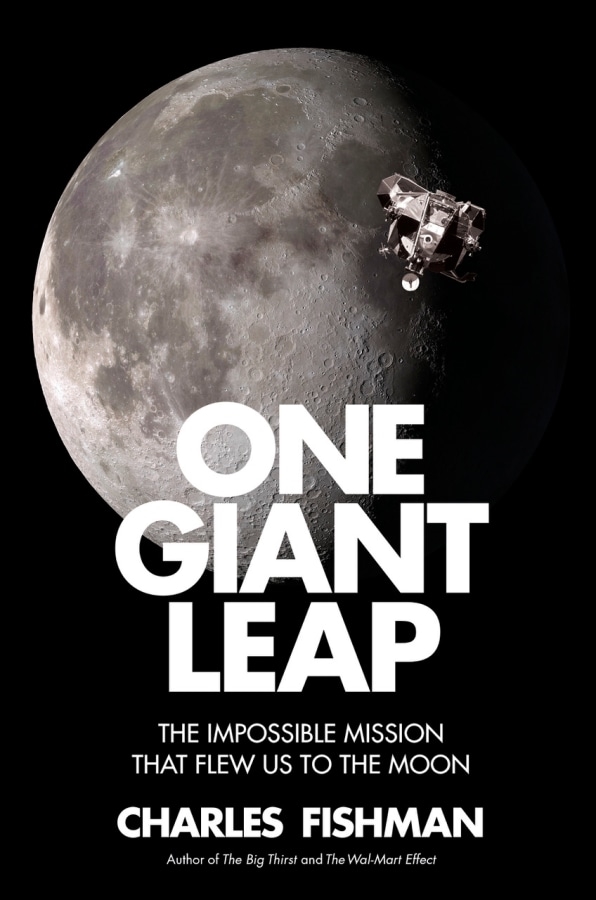
Charles Fishman, who has written for Fast Company since its inception, has spent the past four years researching and writing One Giant Leap, his New York Times best-selling book about how it took 400,000 people, 20,000 companies, and one federal government to get 27 people to the Moon. (You can order it here.)
For each of the next 50 days, we’ll be posting a new story from Fishman—one you’ve likely never heard before—about the first effort to get to the Moon that illuminates both the historical effort and the current ones. New posts will appear here daily as well as be distributed via Fast Company’s social media. (Follow along at #50DaysToTheMoon).
(75)

